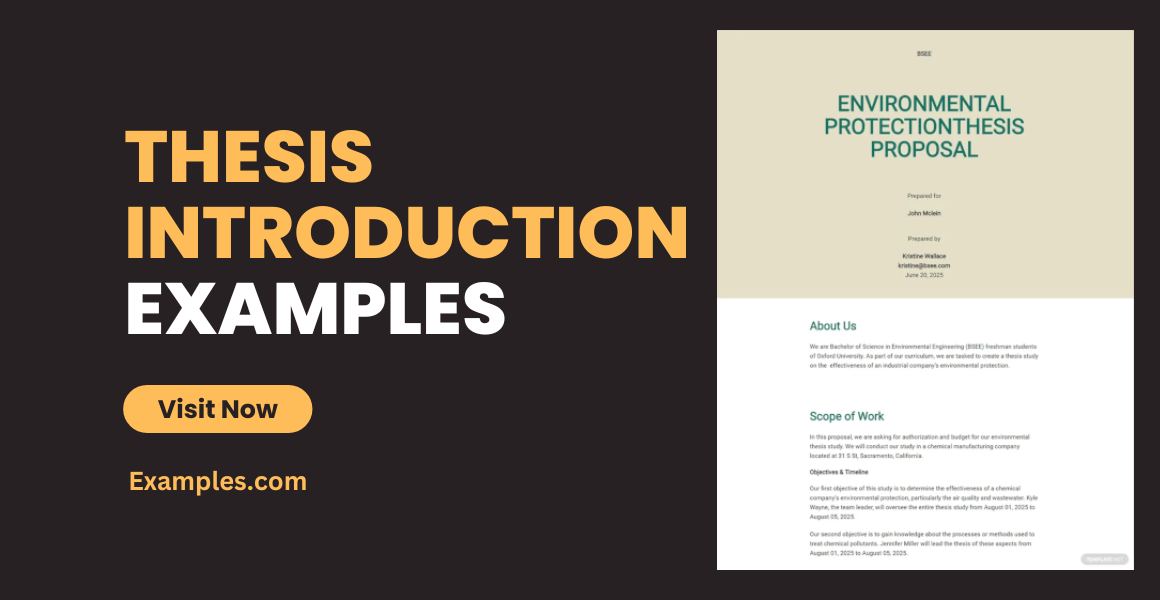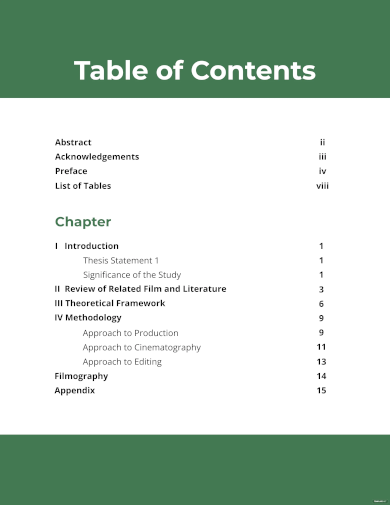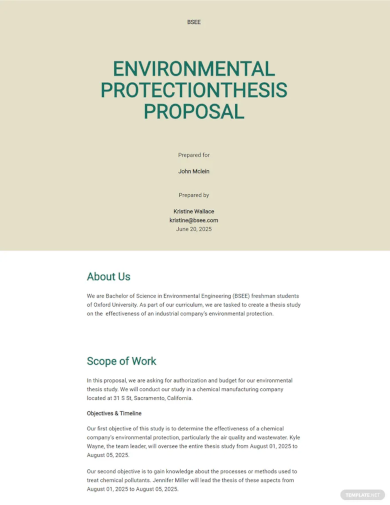Thesis Introduction – Examples, Format, Word, Excel, Pdf
After coming up with your desired topic for your thesis, it is about time that you began preparing that introduction. Just like every good speech or story, you need to have an introduction as to what your thesis outline is all about and what aspects your research will be covering.
In the introduction part of your thesis, you should be trying to focus on three main things, which are called Moves, according to the University of New South Wales database:

Move 1. Establish your territory
By marking your territory, you begin to elaborate on what your topic is about and its present situation at hand. In doing so, there is also a need for you to point out that your area of research will only be limited to this scope, and for it to go beyond your area of responsibility would be out of the context. You may also see essay examples.
Move 2. Establish a niche
This section is the heart and soul of your introduction. Without this, why was there even the need to conduct your research in the first place if you do not know what for?
Move 3. Introduce the current research
In conclusion to your introduction, this is where your research steps into the spotlight. In this part, you will be giving the panel a glimpse of the questions the researchers would be tackling during the course of the thesis journey. Aside from stating the hypotheses in this section, it is also important for the researchers to identify early on the end goals the study wants to achieve. You may also see thesis statement.
Each Move has a number of stages. Depending on what you need to say in your introduction, you might use one or more stages. You will also find examples of introductions, divided into stages with sample sentence extracts.
Most thesis introductions include some (but not all) of the stages listed below. There are variations between different schools and between different thesis, depending on the purpose of the thesis. You may also see essay writings.
Stages in a thesis introduction
- State the general topic and give some background.
- Provide a review of the literature related to the topic.
- Define the terms and scope of the topic.
- Outline the current situation.
- Evaluate the current situation (advantages/ disadvantages) and identify the gap.
- Identify the importance of the proposed research.
- State the research problem/questions.
- State the research aims and/or research objectives
- State the hypotheses.
- Outline the order of information in the thesis.
- Outline the methodology.
Listed below is a sample thesis introduction that was made by me and my partner during our college days. You may notice in the introduction, proponents of previous researchers who have conducted a similar study before since the opinion of experts gives the study basis and grounds as to why this topic requires more future studies. You may also see thesis proposal.
Introduction
Even as traditional media continues to be overshadowed by the insurmountable rise of electronic technology such as internet and mobile phones to access online information, daily newspapers have remained to be a key platform in disseminating public information which incites public discourse. A banner story of a newspaper is considered the highlight and most important news story of the day as newspapers follow an order of stories by arranging them of importance from front to inside pages (Tewksbury, 2002). You may also see personal essay.
At present, however, the media is confronted with issues such as making sensationalized, misleading, and satirical news stories not primarily to provide what the readers need to know, but rather to increase the issue’s marketability and compensate for the company’s production cost. Its gigantic headline running from corner to corner accompanied by its banner picture along with the story itself are put in place to draw readers’ attention and set the tone of the issue (Saxena, 2013). These existing practices greatly affect the placement of news stories from the most relevant and significant ones to the least leaving behind many substantial stories given less attention or least, under-reported. Moreover, this dilemma defeats the purpose of the main objectiveof journalism which is to provide the citizenry with information that is vital in shaping their realities and guide them in their decision making which then collates to a more systematic society. You may also see persuasive essay.
For instance, a local English daily placed the slain Bohol town mayor’s story, which reached national coverage, as its banner story of the issue while placing the progress of Cebu City’s Bus Rail Transit (BRT) project, which offers an opportunity for citizens to escape from the almost unmanageable metropolitan traffic jam when pushed through, in the latter pages of the issue. More so, with the long-aged flood problem in the metropolis especially during rainy season, a local English daily published on its second page an article entitled “Garganera: No program to solve flooding” due to the lack of comprehensive programs. You may also see short essay.
However, this did not land in the banner story, despite the relevance and the problem it seeks to raise; instead, a story about a landslide that killed two people was the highlight of the day. Hence, as it can be observed, politics, crime or disaster-based news which would likely create a stir among readers are most often than not picked as the banner story of the day. There are other news stories in other news categories that if written with the right angle and is deemed timely, can have its chance at the banner story. The news is a by-product of a journalist’s job of gathering enough evidence, conducting interviews and constant research in pursuit of the truth. In a newsroom, it is the editorial board that decides what news should be placed as the banner story which they perceive to be the most relevant news for the public to know. You may also see essay examples.
But sometimes, what the newspapers present as their banner story may not really align with the readers’ interests or perhaps may not strike as the most important or critical issue of the day. According to MacGregor (2007), journalists have been known to stray from their audiences in the context of traditional media. Gieber asserts (1960: 2004) that “news selection has no direct relationship to the wants of readers.” Gans (1979) further emphasizes Gieber’s point saying that journalists pay little to no attention to audience feedback, but place certain news together based on what they think would interest their audiences. You may also see reflective essay.
However, most, if not all of the reading public has no clue on how the editorial board decides each story’s position and inclusion. A proof of the abovementioned issues encompassing the news media industry is the presence of internal watchdogs that specialize on in-depth journalism to cover that under-reported news that is often overlooked by the mainstream news media. The Reuters Foundation is among those that provide the public with stories unlikely read or seen in the mainstream news such as humanitarian, women’s rights, human trafficking-based news. You may also see student essay.
One way or another, the media, in whatever form that it takes will never be perfect and will always be accused of bias and sensationalism which leads to public distrust. According to the analysis of some scholars, (Blumler and Gurevitch, 1995; McManus, 1994; Grabe et al., 2001) they have observed that the news is becoming more sensational or ‘tabloid-like’ over time. These kinds of stories may render the news more ‘colorful’ but are not exactly more informative (Blumler and Gurevitch, 1995; Franklin, 2005). You may also see analytical essay
Which is why one other end goal that the study wants to achieve is for each newspaper editorial board to be transparent on how the body decides each story should be written as well as the selection process of the news stories that determine which page each story belongs to. At the same time, it is also crucial that the public themselves understand how the editorial process is being done to grasp the concept behind story selection and editorial judgment in hopes that the strong trust between the public and the media will be restored once more as the media continues to deliver the news to the reading public with the challenge that they remain loyal and trustworthy by them.You may also see concept essay.
Only front-page studies are available for the researchers’ basis for their research as there were very minimal studies on banner stories. This study will be conducted for the purpose of understanding the present landscape of Cebu’s three local English newspapers. As compared to other media researchers, this will focus on identifying the most frequent news category published in the banner story of Cebu’s three local English newspapers: Cebu Daily News, SunStar Cebu, and The Freeman. Additionally, the researchers would also analyze the rhetoric of the dailies based on 1) the news values assigned by the journalists in every news story, and 2) the standard basis utilized by each newspaper’s editorial board in the selection process of news stories.You may also see comparative essay.
If you think the Introduction part of the thesis is exhausting, just wait until you get to the theoretical background and the review of related literature. They say those parts just crushes the soul out of you during the first half of your thesis writing. But do not fret. Because even though writing a thesis is like taking a walk in the park (Jurassic Park), all that hassle is really worth the tassel. Good luck!





